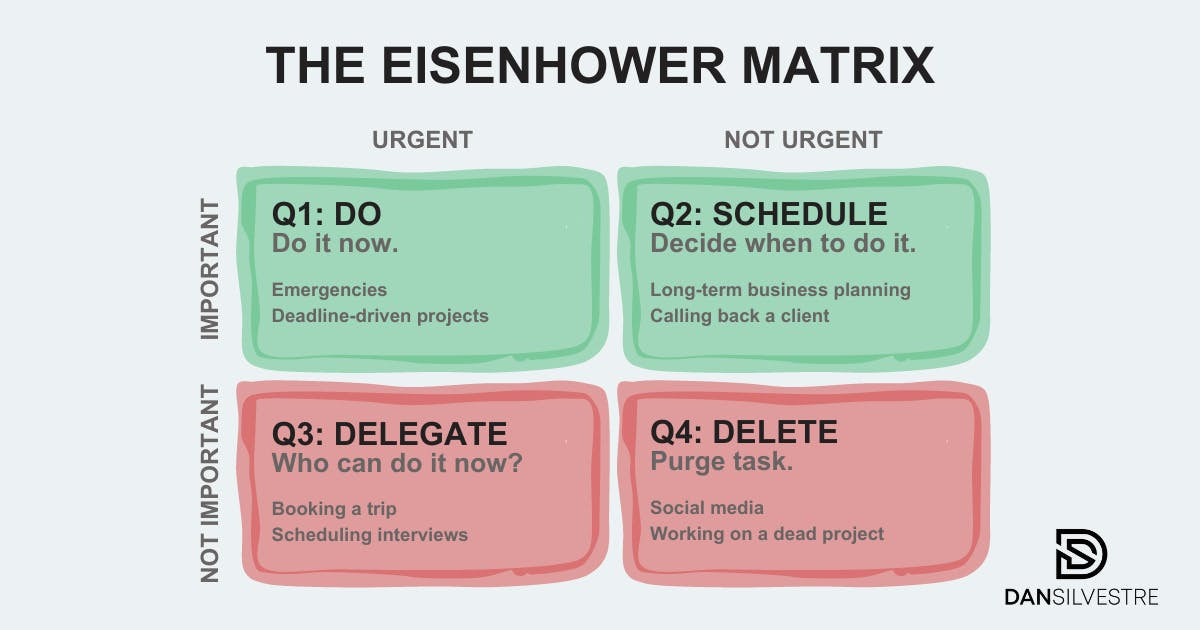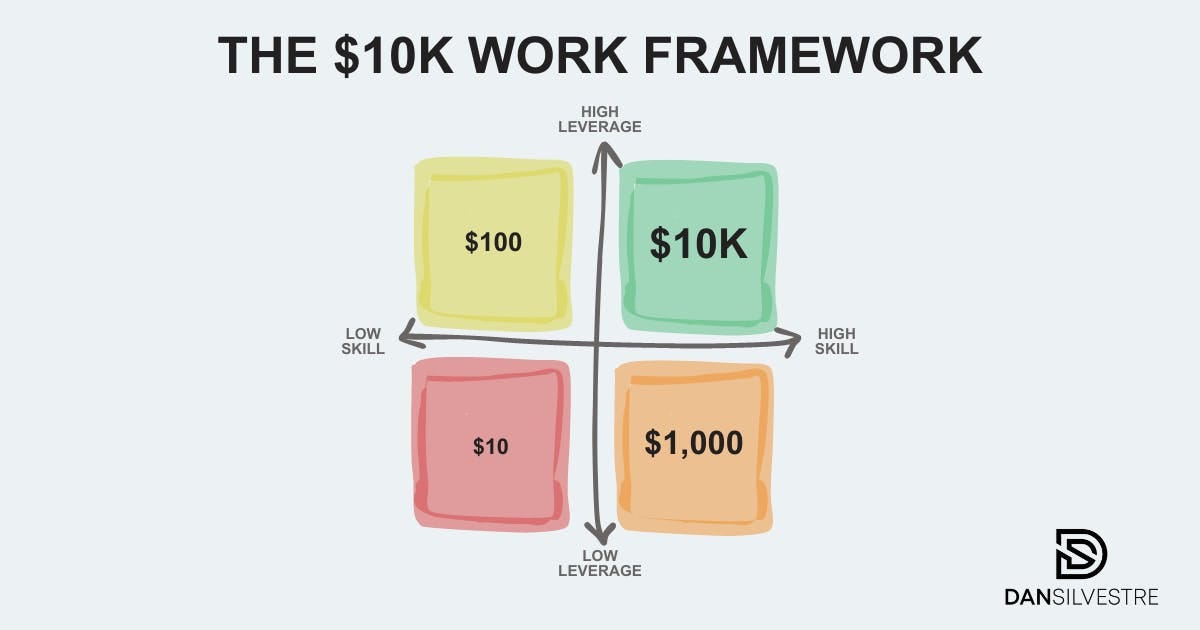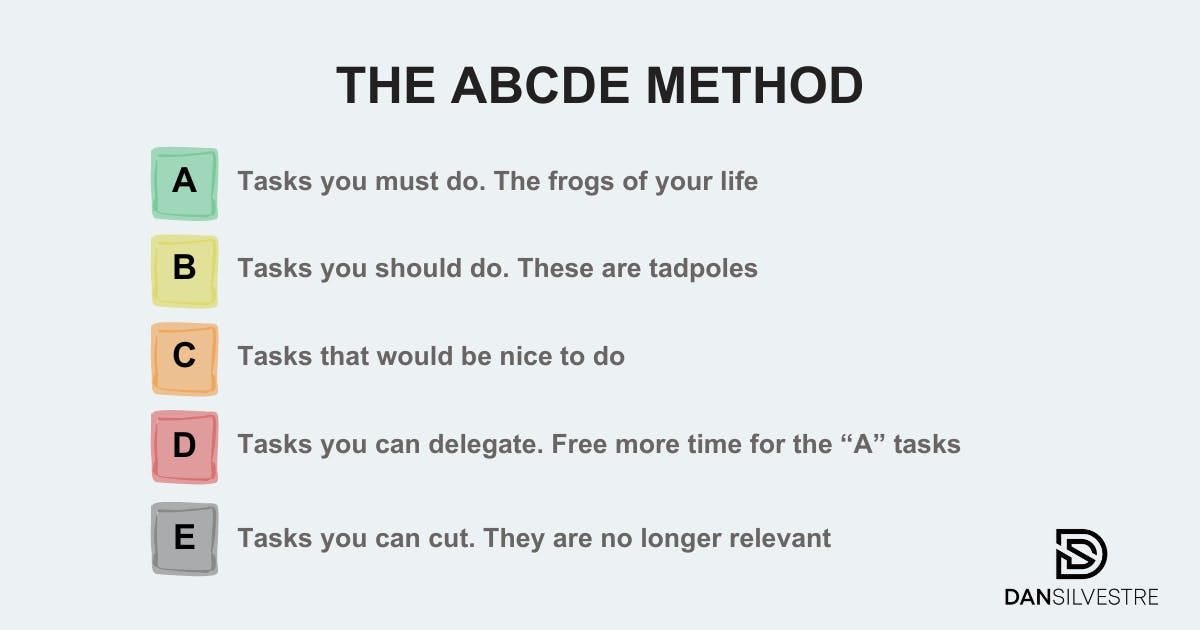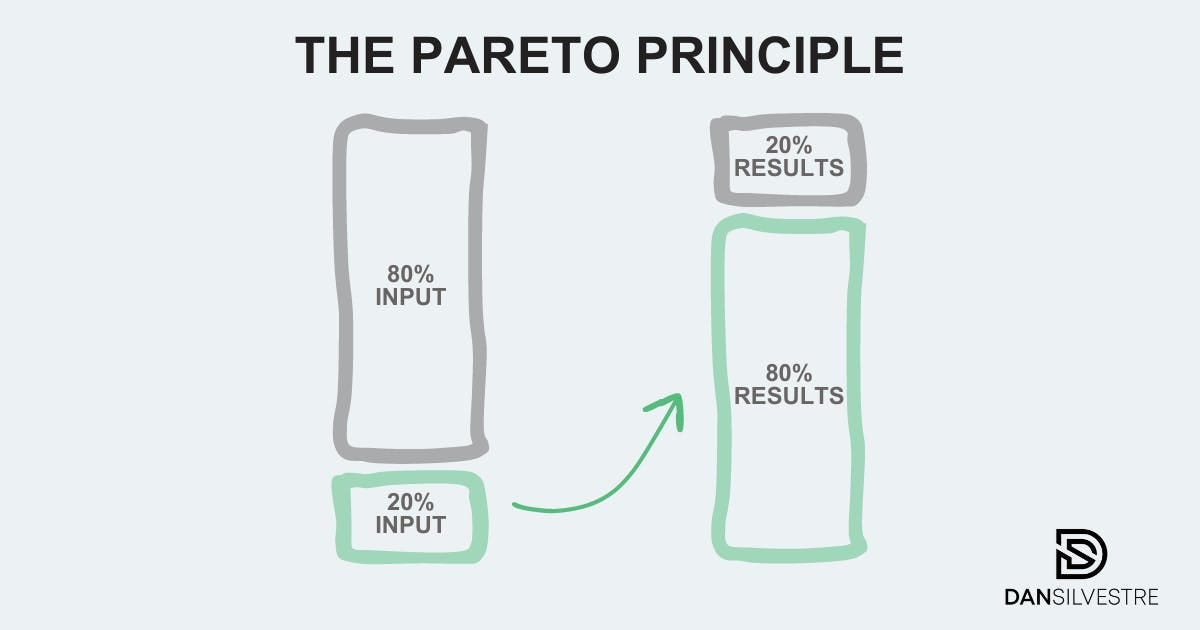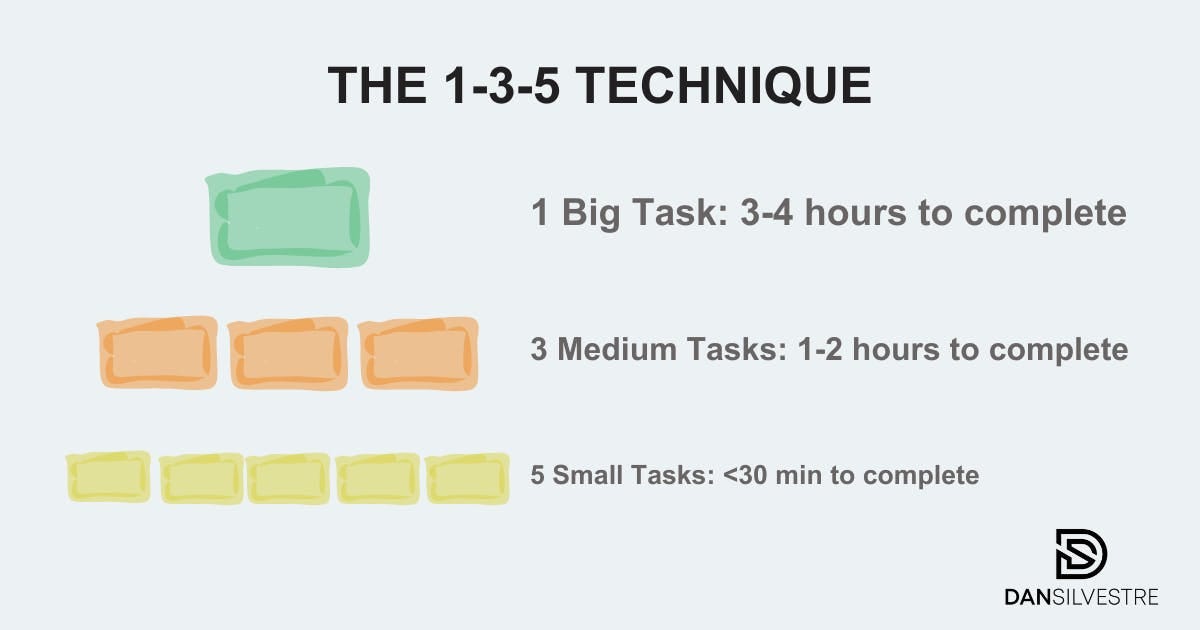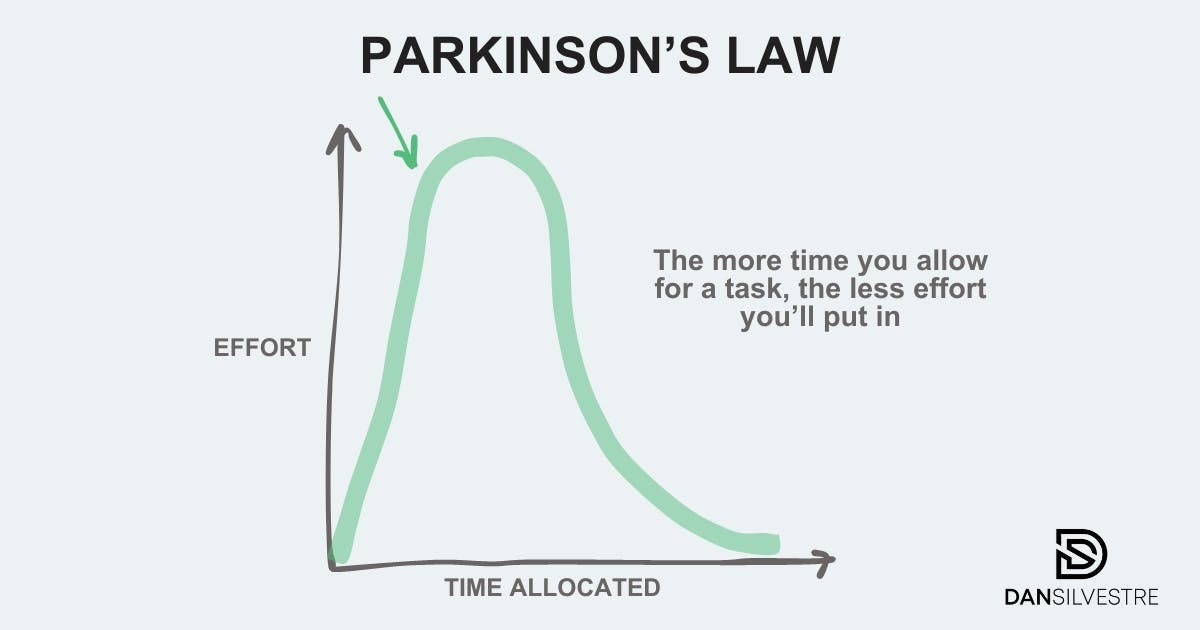How to Prioritize Tasks: 7 Powerful Frameworks for Prioritization
Your ability to prioritize will determine your future.
How to Prioritize Tasks: 7 Powerful Frameworks for Prioritization
Read on my website
Read time: 8 minutes
All my courses and books will be full price on Black Friday this year.
However:
From now to Tuesday, they’re 30% off
Wednesday, 20%
Thursday, 10%
As a subscriber, you get 35% off until Tuesday:
The Productivity Vault — 300+ practical productivity hacks
Zero To Done — my productivity system for getting things done
Zettelkasten in Roam — my system for taking valuable notes
One of the biggest challenges for managers is knowing how to prioritize tasks.
We all want to be as productive as possible.
But most days you find yourself working with little direction and purpose. Working on other people’s priorities while your to-do list grows.
Like someone is pulling you in a million different directions. Balancing multiple projects and tasks. Feeling swamped and not knowing where to start.
You’re hardly alone.
Without a system for prioritizing tasks at work, it's easy to get overwhelmed.
So I’m going to let you in on a secret of productivity:
Think of the successful people you know or admire. Do you know the one thing they do better than anyone else? They prioritize their tasks better.
They work on the most important tasks that help achieve their goals. They decide what’s important, and then work on them.
Mastering prioritization can change your life.
“I'm actually as proud of the things we haven't done as the things I have done.” — Steve Jobs
Prioritizing well is the common thread behind successful people.
Your ability to prioritize will determine your future.
When priorities are piling up, you need a clear framework to take you from chaos to clarity.
Here are my top 7 favorite frameworks to prioritize tasks.
Create a master task list
If you’re anything like me, your to-dos arrive from a dozen different places. Your goals, email, instant messages, a colleague asking for a favor.
It’s impossible to prioritize your tasks if they’re all in your head.
The first step to prioritize your tasks efficiently is to create a master task list with all your to-dos.
Do a brain dump of all the tasks you need to complete across all your projects. Break down bigger tasks into smaller sub-tasks.
Move all your tasks into a central location: an app, sticky notes, or a physical notebook. Use what works best for you as long as it’s easily accessible and updated when new priorities come along.
This exercise shouldn’t take more than a few minutes. And it immediately makes your workload feel less overwhelming. So much of how to prioritize tasks revolves around knowing what’s actually on your plate.
Once all of your tasks are on a single list, you can start analyzing and preparing to prioritize them.
Your master list helps you understand how to prioritize your tasks. But it can still get complicated when deciding what needs to get done now versus later.
That’s when you’ll have to use one of the following prioritization frameworks.
They’ll help you separate the urgent from the important.
#1 The Eisenhower Matrix
US President Dwight Eisenhower once said:
“I have two kinds of problems, the urgent and the important. The urgent are not important, and the important are never urgent.”
Stephen Covey introduced The Eisenhower Matrix in “The 7 Habits of Highly Effective People”.
Here’s how to prioritize tasks using the Eisenhower Matrix:
Evaluate each task based on its urgency and importance.
Then, insert each of your tasks into one of four quadrants:
Q1: Urgent and Important. Tasks that need your action right away. Examples: important meetings and emails, deadline-driven projects, and pressing clients
Q2: Non-Urgent and Important. Tasks that contribute to your long-term mission, values, and goals. Examples: strategic planning, recruiting, and self-improvement
Q3: Urgent and Unimportant. These grab your attention, so are easily mistaken as important – but you have better things to do. Examples: booking a trip, scheduling interviews, some phone calls and meetings
Q4: Non-Urgent and Unimportant. Total time-wasters. Examples: pointless emails and business trips, aimless web browsing, or working on a dead project
To each quadrant corresponds an action:
Q1: Do it now
Q2: Schedule these tasks into your calendar
Q3: Delegate to a member of your team
Q4: Delete
Work on Q1 activities first to make sure you stay on top of deadlines. Then you can focus on your most productive quadrant: Q2. These are your real high-impact tasks.
To make the most of the Eisenhower Matrix, use it every morning. It is an effective time management tool to prioritize your tasks, make decisions quickly, and stay organized.
#2 $10K Work
The $10K framework is a simple process of identifying your highest-leverage tasks.
Here’s how to prioritize tasks using the $10K framework:
Grab your master task list and insert each task into one quadrant:
$10 work. Replying to emails (getting to inbox zero), some meetings, or talking to unqualified prospects
$100 work. Outsourcing simple tasks (that you should automate), or listening to an audiobook from your industry
$1.000 work. Planning and prioritizing your day, delegating complex tasks, or acquiring a unique skill
$10K work. Recruiting for a senior position, implementing systems and SOPs, selling to high-value customers
Now you know your highest-leverage activities. Set aside some time each day to work on your $10K tasks.
Here’s more on how I use the $10K framework:
#3 The MoSCoW Method
The MoSCoW method is a simple prioritization technique that divides your tasks into 4 buckets.
Assign every task on your to-do list to one of four categories:
M – Must do. Tasks you absolutely have to do. They must be completed before moving on to others
S – Should do. Tasks you should do, but they're a lower priority than M tasks. They are important but not critical to the project’s success
C – Could do. Nice-to-dos. You'd like to do them, but if you don't, it's probably not a big deal
W – Won't do. Tasks that just aren't worth doing
After you've assigned each task to a category, delete your W tasks. You won’t need them. Your tasks list should be a lot shorter now.
Focus first on M tasks, followed by S tasks. And, if you have time, move on to your C tasks. By working on your list from the top down, you’re always working on your highest-priority tasks.
The great thing about the MoSCoW framework is that you can use it on a macro and micro scale.
You can use it to prioritize your tasks for the day or the week.
And you can apply it to a specific project to determine your truly high-leverage tasks.
But if you have a lot of tasks that need delegation, the MoSCoW framework isn't the best technique. Instead, use the ABCDE method.
#4 The ABCDE Method
The ABCDE method comes from Eat That Frog by Brian Tracy.
Here’s how to prioritize your tasks using the ABCDE method:
First, assign a letter value to each task on your master list according to its level of importance:
A - tasks you must do. They are the top priority
B - tasks you should do. They are high-priority
C - nice-to-dos. They are medium-priority
D - tasks you should delegate to someone else. They are low-priority
E - tasks you should drop. They are not a priority
Then, go through your A tasks and assign it a number:
A1 - the highest priority task
A2 - the second most important task
A3 - the third most important task
Repeat until all tasks have letters and numbers. This is the order in which you’ll do your tasks.
The ABCDE method is a simple way to prioritize your tasks.
Here's why I love it:
It takes into account that different tasks can take the same priority level. But by using the second layer of prioritization, their true importance becomes much clearer.
This ranking helps understand expectations and provides a clear roadmap for tackling tasks. And while it doesn’t account for urgency, you can consider it when deciding how important a task is.
Work on your A and B tasks first as those are the ones that will make or break your success at work.
#5 The Pareto Principle
The Pareto Principle states that “80% of the output or results will come from 20% of the input or action”. It’s also known as the 80/20 rule.
It disregards task urgency and importance to focus on output and performance.
To apply the Pareto Principle to prioritize your tasks, find the tasks that bring the bulk of the results. Then focus on those tasks.
Here’s how to find your high-impact tasks:
First, look at your goals. What are you trying to achieve this week/month/quarter? Pick one goal.
Now, look at your master list. Go through each item and ask yourself:
Does this task bring me closer to my goal? Answer yes or no for each item.
Then, for each “yes” task, assign it a value from 1 to 10. 1 being “little impact on your goal” and 10 being “the biggest impact on your goal”.
And now you know:
The 3 tasks with the biggest number are your high-impact tasks.
Now, it’s time to focus your deep work sessions on those 3 tasks—and those 3 tasks only. You shouldn’t be working on anything else until you complete them.
You can also use the Pareto Principle to prioritize your tasks in the short term:
If you could only work on 3 things this week, what would those be?
Or:
If you could only work on 1 thing today, what would that be?
#6 The 1-3-5 Technique
The 1-3-5 prioritization technique is one of the simplest ways to tackle your task list.
It forces you to focus on important tasks. But it also gives you a framework to prioritize the less important tasks you need to work on.
Think of it as a mix of the MoSCoW, MIT, and Ivy Lee methods.
Here’s how to prioritize tasks using the 1-3-5 technique:
Go into your master task and group them into big, medium, and small tasks. The criteria you’re considering is time.
As a rule of thumb, consider:
Big Tasks take anywhere from 3 to 4 hours to complete
Medium Tasks can take about 1-2 hours
Small Tasks may take less than 30 minutes to an hour each
Then every day, choose 9 tasks from your master task list:
1 big task
3 medium tasks
5 small tasks
Finally, order your lists of 3 important tasks and 5 nice-to-do tasks by priority.
Start your day by working on your biggest task. This will help you get momentum to finish the rest of the tasks on your 1-3-5 list. Tackle the big thing and you’re halfway there.
You can even combine this technique with the Pomodoro Technique.
The 1-3-5 technique works especially well when you feel you’ve been neglecting the smaller but equally important tasks.
You're making progress on the big projects. But you're also giving your time to the everyday tasks, such as admin or repeating tasks.
#7 MIT: Most Important Task
Out of all 7 models, this is the simplest prioritization framework.
A Most Important Task (MIT) is a critical task that creates the most significant results. It’s the task that you most want or need to get done today.
Here’s how to prioritize your tasks using the MIT method:
Every day, write down 2-3 MITs on an index card.
Have at least one of your MITs related to your goals. While the other two can be work stuff, one must be a goal action.
Then, focus on getting your MITs done as soon as possible. It doesn’t matter what else you do that day, you need to complete your 2-3 MITs.
Work on these tasks first thing in the morning.
You can even combine this technique with Parkinson’s Law.
Set an artificial deadline to have your MITs complete. Say, “I’ll have done my MITs today by 11 am”. You’ll be amazed at how quickly can complete your day’s most important tasks.
It also gives you an excuse to say no to interruptions. Tell your colleagues you’re on a deadline and will get back to them later.
Achieve your MITs as quickly as possible, and you’ve already won the day. You have the rest of the day to handle anything else that comes up.
How to Prioritize Tasks: Next Steps
Every prioritization framework has the same goal: to make sure you’re working on your highest-leveraging tasks.
It doesn’t matter which technique you use. Or if you use multiple frameworks. Or if you prefer to mix parts of different systems to make your custom method.
What matters is that you pick something that makes sense and feels natural, and get to work.
And whatever prioritization framework you choose, here are a few pro tips:
Schedule time on your calendar to work on your tasks. This is called time blocking.
Plan your week to prevent distractions from ruining your day. This will help you remain focused on your most important tasks.
Also, make sure to prioritize your highest-leverage activities during your most productive hours.
You see, we all have something called biological prime time. This is when you’re most energetic and productive.
By doing your deep work during those hours, you can complete your work faster.
Single-task. Give your 100% attention to a single task and avoid context-switching at all costs.
Finally, conduct a weekly review and see where and how you can improve.
As you practice being ruthless with how you prioritize your tasks, you'll find it gets easier. And you'll be able to pick the right method at the right time.
And you'll find that ruthlessly prioritizing tasks is liberating.
All my courses and books will be full price on Black Friday this year.
However:
From now to Tuesday, they’re 30% off
Wednesday, 20%
Thursday, 10%
As a subscriber, you get 35% off until Tuesday:
The Productivity Vault — 300+ practical productivity hacks
Zero To Done — my productivity system for getting things done
Zettelkasten in Roam — my system for taking valuable notes
Building a Brain OS — how I create highly relevant book summaries
Your Next 90 Days — my system to plan quarters
Win Your Year — my goal-setting system to achieve yearly goals
The 6 Procrastination Personalities — how to finally beat procrastination
Jump in here for courses and here for products.






